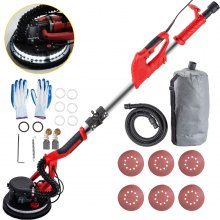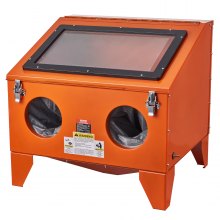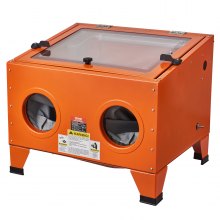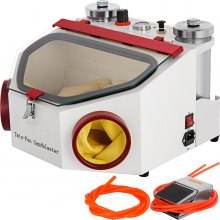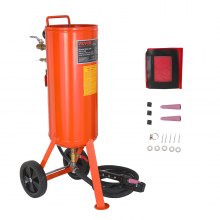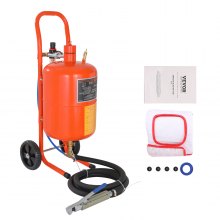The Ultimate Guide to Sand Blasters: Everything You Need to Know
Introduction to Sand Blasters
Sand blasters are powerful tools used in various industries for surface preparation, cleaning, and restoration purposes. Whether you're a professional contractor or a DIY enthusiast, understanding how sand blasters work and their applications can greatly benefit your projects.
How Sand Blasters Work
Understanding the Mechanics
Sand blasters utilize compressed air or pressurized water to propel abrasive materials at high speeds onto surfaces. This abrasive action effectively removes rust, paint, corrosion, and other contaminants from different types of surfaces.
Components of a Sand Blaster
A typical sand blaster consists of several key components, including the blasting gun, abrasive container, compressor or pressure washer, and abrasive material. Each component plays a crucial role in the efficiency and effectiveness of the sand blasting process.
Types of Abrasive Materials
Various abrasive materials can be used in sand blasting, such as sand, garnet, glass beads, and aluminum oxide. The choice of abrasive material depends on factors like the surface material and the desired finish.
Applications of Sand Blasters
Automotive Industry
Sand blasters are widely used in the automotive industry for stripping paint, removing rust, and preparing surfaces for painting or coating. From car restoration projects to industrial applications, sand blasters play a vital role in maintaining and refurbishing vehicles.
Construction and Manufacturing
In construction and manufacturing, sand blasters are used for cleaning and surface preparation of metal, concrete, and masonry surfaces. They help improve adhesion for coatings, remove debris, and enhance the overall quality of the finished products.
Shipbuilding and Marine Maintenance
Sand blasters are essential tools in shipbuilding and marine maintenance for cleaning ship hulls, removing marine growth, and preparing surfaces for painting or welding. They ensure the longevity and structural integrity of marine vessels and offshore structures.
Home Improvement and DIY Projects
For DIY enthusiasts and homeowners, sand blasters offer a convenient solution for stripping paint, removing rust, and restoring old furniture or metal fixtures. With the right equipment and safety precautions, DIY sand blasting can be a rewarding and cost-effective way to tackle home improvement projects.
Tips for Using Sand Blasters Safely and Effectively
Wear Proper Protective Gear
Before operating a sand blaster, always wear appropriate personal protective equipment, including safety goggles, gloves, and a respirator. Abrasive materials and debris can pose serious health risks if proper precautions are not taken.
Choose the Right Abrasive Material and Pressure
Selecting the correct abrasive material and pressure setting is crucial for achieving the desired results without damaging the surface. Consult with experts or refer to equipment manuals to determine the optimal settings for your specific application.
Maintain Proper Ventilation
Ensure adequate ventilation in the work area to minimize exposure to airborne dust and contaminants generated during the sand blasting process. Proper ventilation helps protect both the operator and surrounding environment from potential hazards.
Practice Proper Technique and Control
Mastering the proper technique and control is essential for achieving consistent and high-quality results with a sand blaster. Practice on scrap materials or test surfaces before tackling larger projects to refine your skills and minimize errors.
Conclusion: Take Your Projects to the Next Level with VEVOR
Investing in a quality sand blaster from VEVOR can significantly enhance your productivity and the quality of your projects. Whether you're a professional contractor or a DIY enthusiast, having the right equipment and knowledge is key to achieving successful outcomes. Explore VEVOR's range of sand blasters and accessories today to take your projects to the next level.
FAQs about "sand blaster"
What is a sand blaster?
A sand blaster, also known as a sandblasting machine or abrasive blasting equipment, is a tool used for removing surface contaminants, such as rust, paint, or scale, from various surfaces by propelling abrasive materials at high speeds. These abrasive materials, typically sand or grit, are ejected from a nozzle under pressure to effectively clean or prepare surfaces for painting, coating, or other treatments.
How does a sand blaster work?
A sand blaster operates on the principle of abrasive blasting, where abrasive material is propelled at a surface using compressed air or water pressure. The abrasive material, usually sand or grit, is stored in a chamber and then fed through a hose to a nozzle. When the operator activates the sand blaster, the abrasive material is forced out of the nozzle at high velocity, striking the surface and removing contaminants through abrasive action. The pressure and type of abrasive material used can be adjusted to suit different surface materials and cleaning requirements.
What are the common applications of a sand blaster?
Sand blasters are versatile tools with various applications across industries and DIY projects. Some common uses include:
- Removing rust, paint, or corrosion from metal surfaces, such as automotive parts or machinery.
- Cleaning concrete or brick surfaces for renovation or maintenance.
- Etching designs or patterns onto glass, stone, or metal surfaces for artistic or decorative purposes.
- Preparing surfaces for painting, coating, or bonding by creating a clean, roughened texture for better adhesion.
- Removing stubborn residues or contaminants from surfaces in industrial cleaning processes.
What safety precautions should I take when using a sand blaster?
Using a sand blaster involves working with high-pressure equipment and abrasive materials, so it's important to prioritize safety. Here are some key precautions to follow:
- Wear appropriate personal protective equipment (PPE), including safety goggles, a respirator, gloves, and protective clothing to shield against abrasive particles and dust.
- Ensure proper ventilation in the workspace to prevent inhalation of airborne contaminants.
- Operate the sand blaster in a controlled environment away from bystanders to minimize the risk of injury from flying debris.
- Follow manufacturer instructions for equipment setup, operation, and maintenance to prevent accidents and equipment damage.
- Regularly inspect hoses, nozzles, and fittings for signs of wear or damage, and replace them as needed to maintain safe operation.
- Be mindful of the type and size of abrasive material used, as different materials may pose varying health risks and environmental hazards.





























